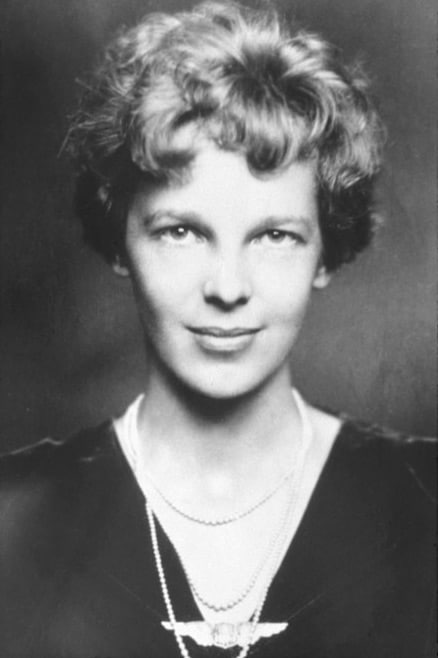
Amelia Earhart was born on July 24, 1897 in Atchison, Kansas, USA, the second child of Edwin and Amy Earhart. From an early age, Amelia displayed what were called “tomboy” activities, including climbing trees, shooting rats with a rifle, and collecting worms, moths and tree toads.
When she was 10 years old, Amelia saw an aircraft at the Iowa State Fair, but was uninspired by what appeared to be a rusty contraption. She declined her father’s invitation to fly, choosing, instead, the safety of the merry-go-round. However, ten years later Amelia had her first airplane flight when attending a flying exhibition and her passion for traveling in 3 dimensions was ignited. On December 28, 1920, when Earhart and her father attended an aerial meet in Long Beach, California, she booked a passenger flight that changed her life. She would later confess, “By the time I had got two or three hundred feet off the ground, I knew I had to fly.” By early 1921, Amelia had saved enough money for flying lessons, and she took to the skies, obtaining a flying licence in 6 months.
In 1928, Amelia gained widespread fame when she became the first woman to fly across the Atlantic Ocean as a passenger on a transatlantic flight. The plane was piloted by Wilmer “Bill” Stultz and Lou Gordon. This achievement brought her international recognition and marked the beginning of her aviation career.
On May 20, 1932, Amelia Earhart set out became the first woman to fly solo across the Atlantic Ocean. Piloting a Lockheed Vega 5B from Newfoundland, Canada, she reached Culmore, Northern Ireland, in approximately 15 hours. Her bravery and determination made her a symbol of women’s advancement and empowerment during the 1930s.
In the years that followed, she continued to set records and push boundaries in the world of aviation. In 1935, she became the first person, male or female, to fly solo from Honolulu, Hawaii, to Oakland, California, setting yet another aviation milestone that earned her the prestigious Harmon Trophy.
Her most ambitious endeavor was her attempt to circumnavigate the globe along the equator. On June 1, 1937, she, along with her navigator Fred Noonan, set out on this daring journey. They completed much of the trip successfully, covering thousands of miles, but tragically, their plane, a Lockheed Model 10 Electra, disappeared somewhere over the Pacific Ocean near Howland Island on July 2, 1937. Despite an extensive search effort, neither the plane nor its occupants were ever found.
The disappearance of Amelia Earhart remains one of the greatest unsolved mysteries in aviation history. Several theories have been proposed over the years, ranging from running out of fuel and crashing into the ocean to being captured by the Japanese military. However, no conclusive evidence has been found to support any particular theory.
Amelia Earhart’s legacy extends far beyond her groundbreaking achievements in aviation. She became an inspiration to women around the world, encouraging them to pursue their passions and break barriers in traditionally male-dominated fields. Her bravery, determination, and pioneering spirit have left a lasting impact on the aviation industry and continue to inspire generations of people to pursue their dreams fearlessly.
